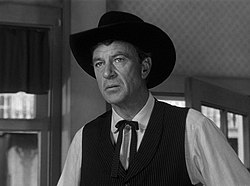
The everyman is a stock character of fiction. An ordinary and humble character, [3] [4] the everyman is generally a protagonist whose benign conduct fosters the audience's identification with them.

The everyman is a stock character of fiction. An ordinary and humble character, [3] [4] the everyman is generally a protagonist whose benign conduct fosters the audience's identification with them.

The term everyman was used as early as an English morality play from the early 16th century: The Summoning ofEveryman. [4] The play's protagonist is an allegorical character representing an ordinary human who knows he is soon to die; according to literature scholar Harry Keyishian he is portrayed as "prosperous, gregarious, [and] attractive". [6] Everyman is the only human character of the play; the others are embodied ideas such as Fellowship, who "symbolizes the transience and limitations of human friendship". [6]
The use of the term everyman to refer generically to a portrayal of an ordinary or typical person dates to the early 20th century. [7] The term everywoman [8] originates in the same period, having been used by George Bernard Shaw to describe the character Ann Whitefield of his play Man and Superman . [9]
An everyman is described with the intent that most audience members can readily identify with him. Although the everyman may face the same difficulties that a hero might, archetypal heroes react rapidly and vigorously by manifest action, whereas an everyman typically avoids engagement or reacts ambivalently, until the situation, growing dire, demands effective reaction to avert disaster. Such a "round", dynamic character—that is, a character showing complexity and development—is generally a protagonist. [10]
Or if lacking complexity and development—thus a "flat", static character—then the everyman is a secondary character.[ citation needed ] Especially in literature, there is often a narrator, as the written medium enables extensive explication of, for example, previous events, internal details, and mental content. An everyman narrator may be noticed little, whether by other characters or sometimes even by the reader. A narrating everyman, like Ché in the musical Evita , [11] [12] may even address the audience directly.[ citation needed ]